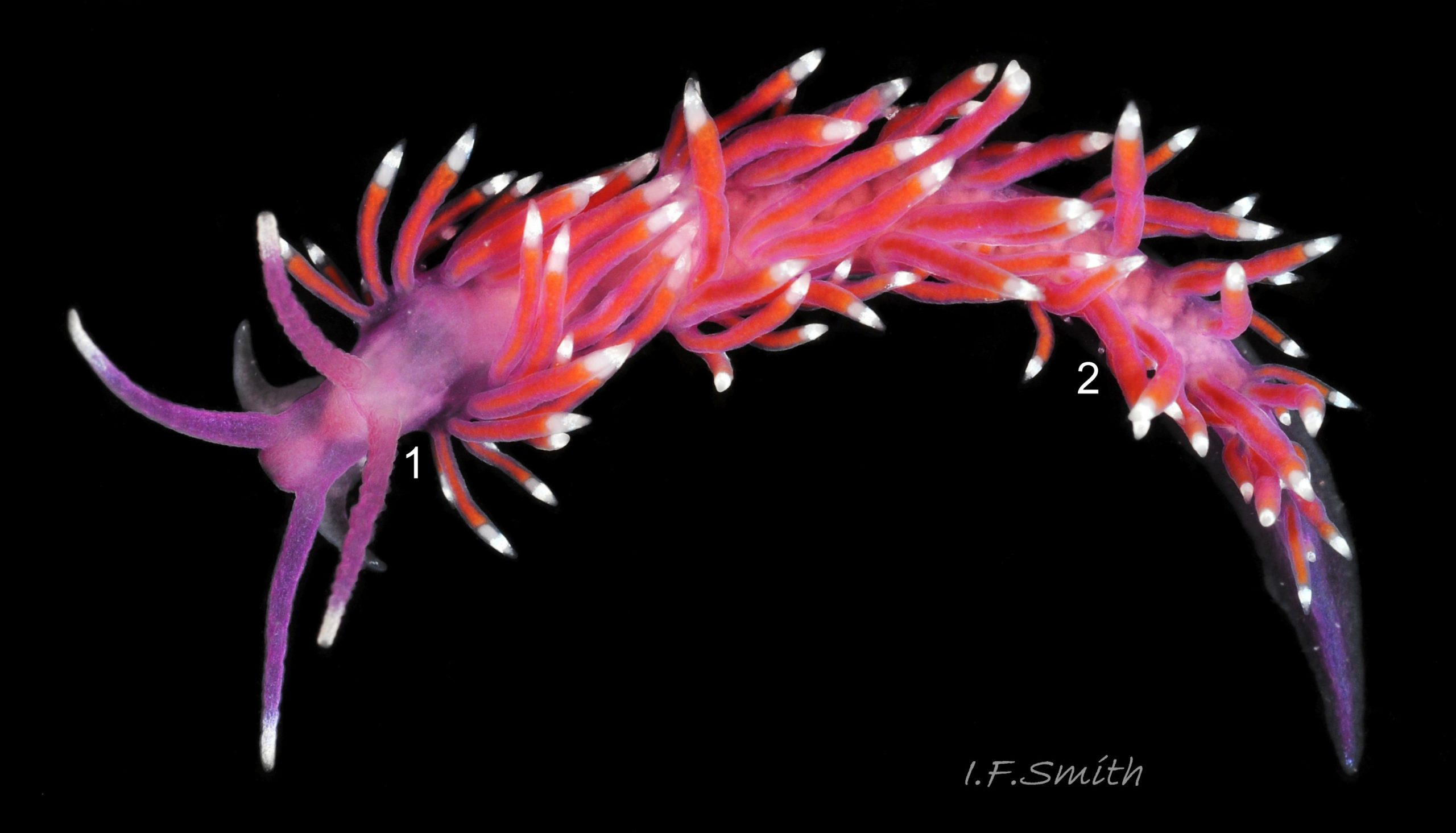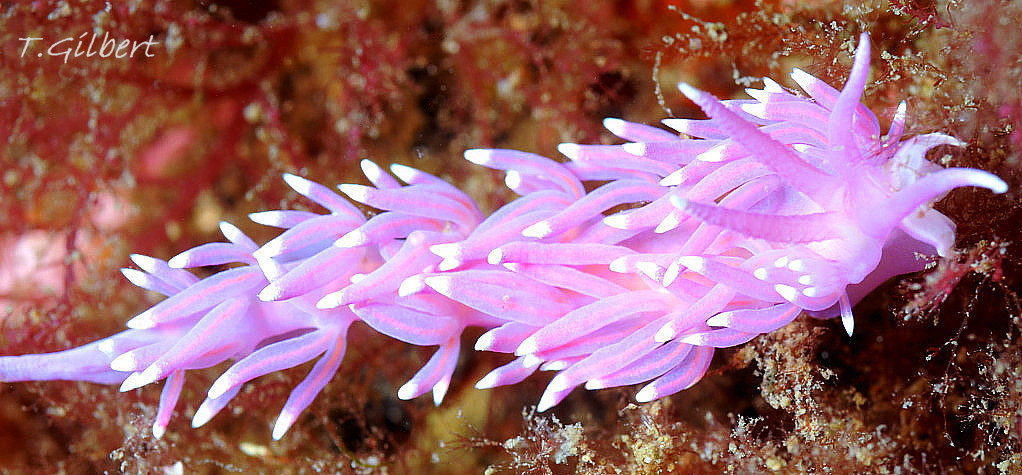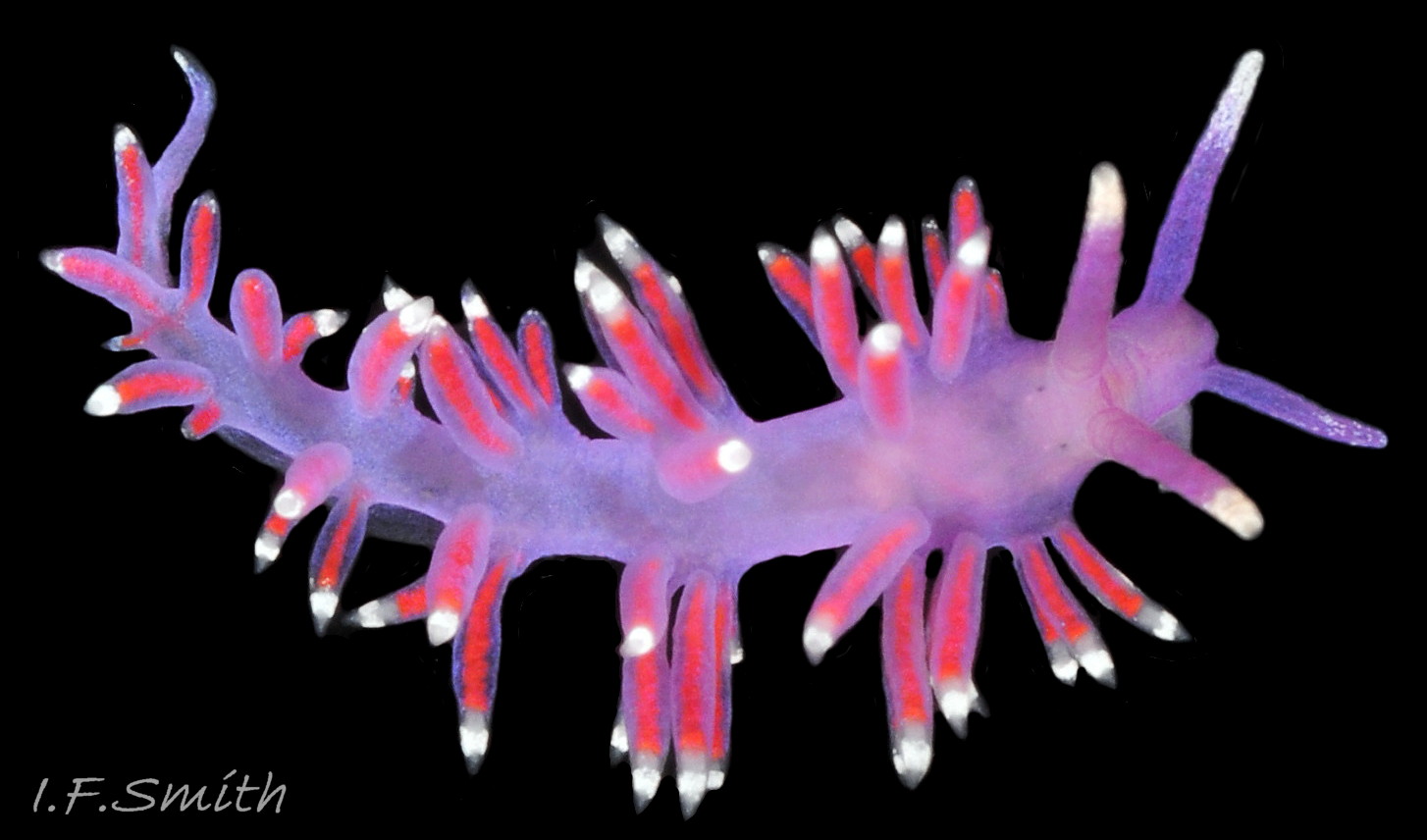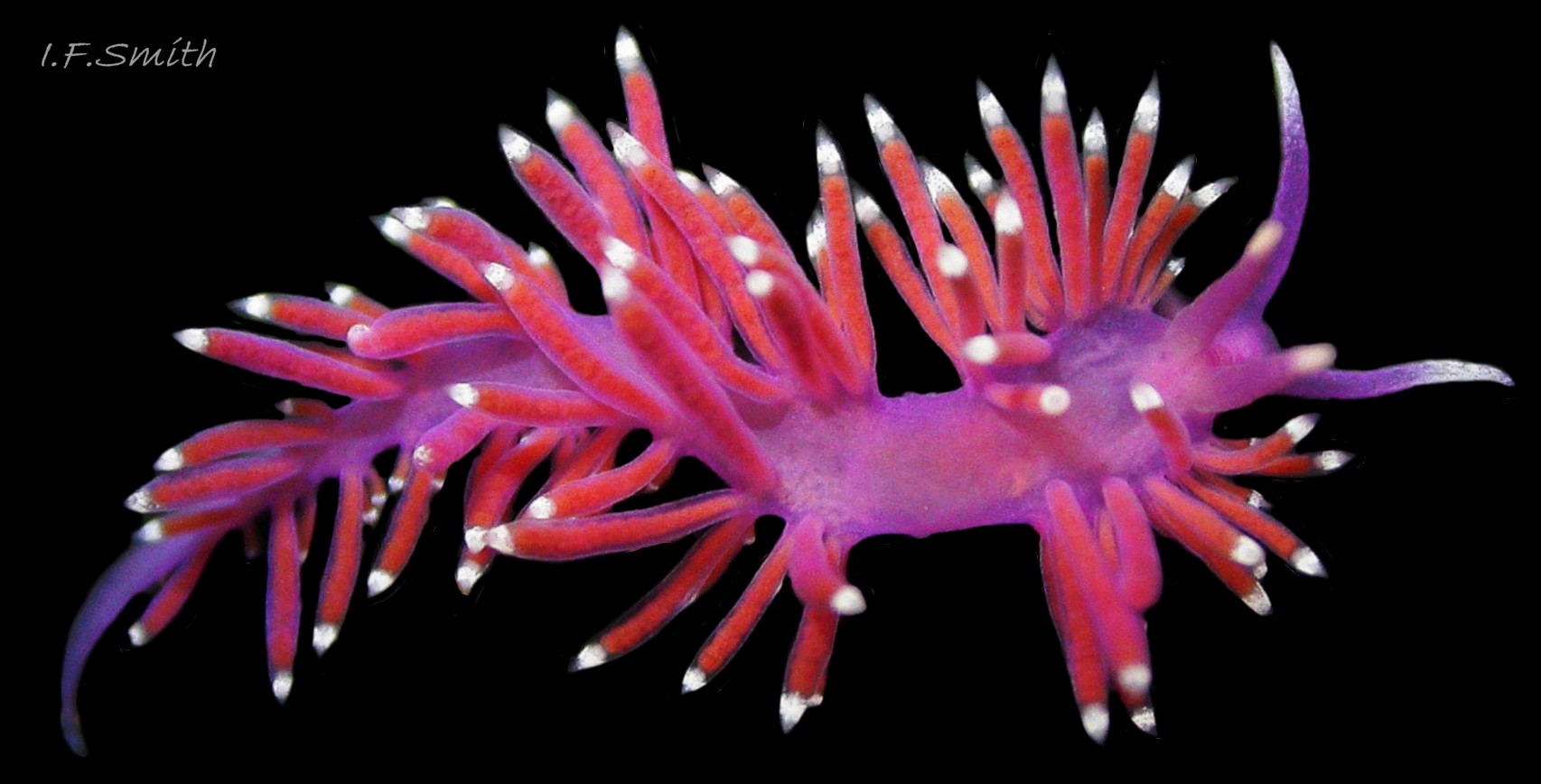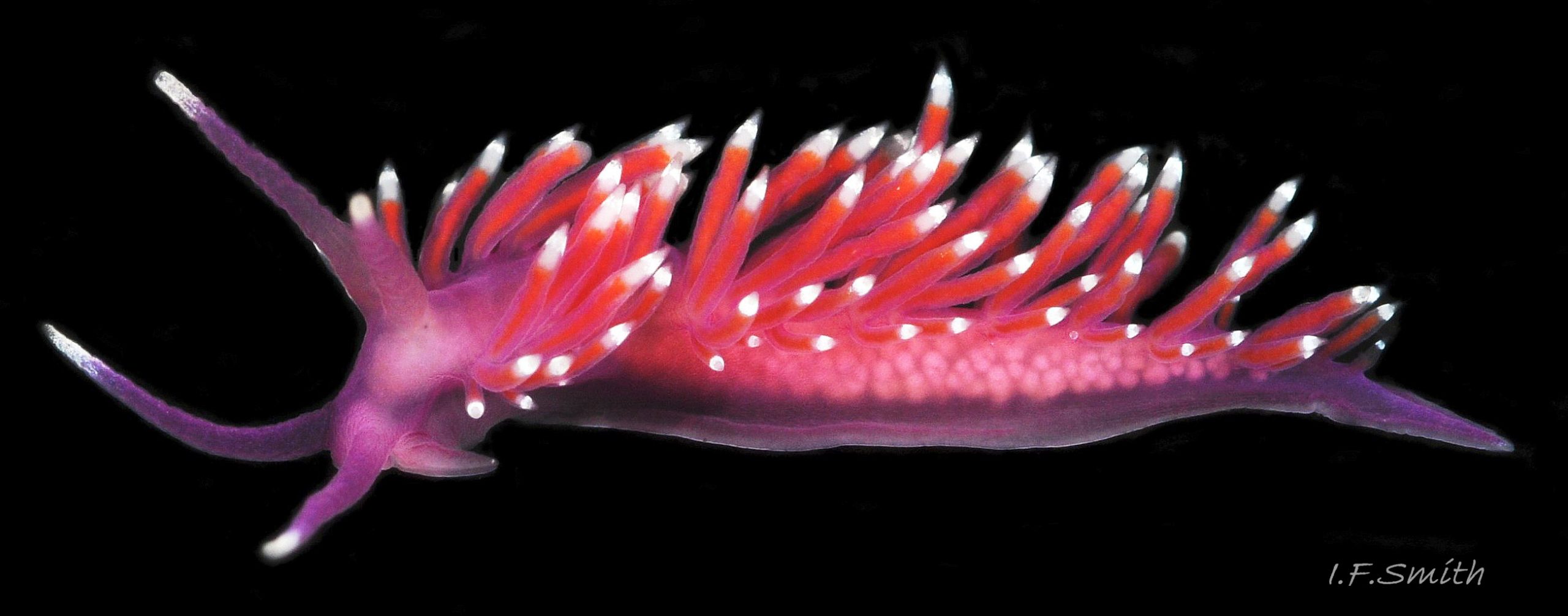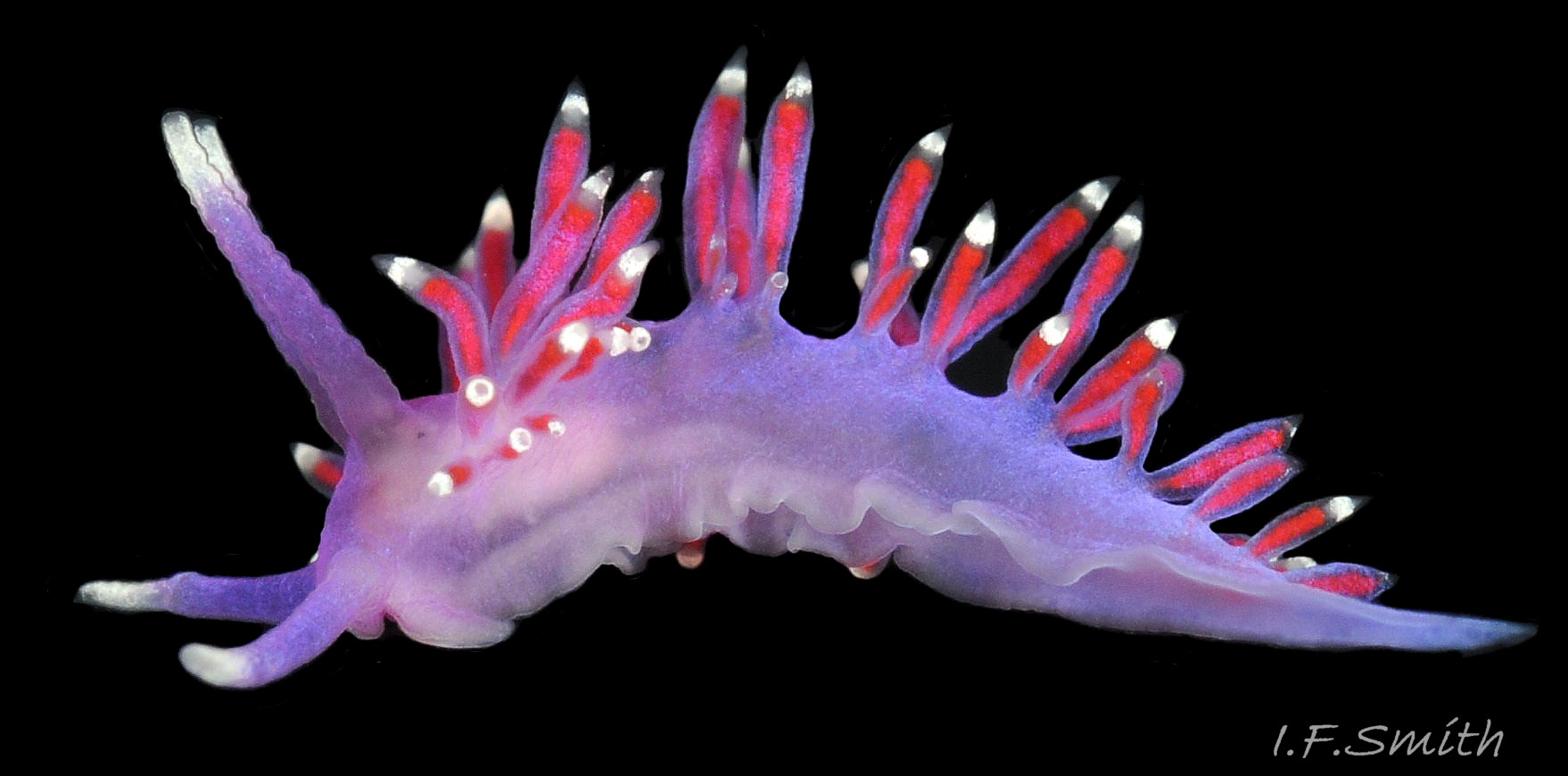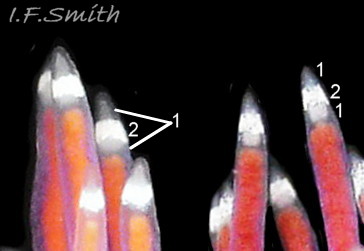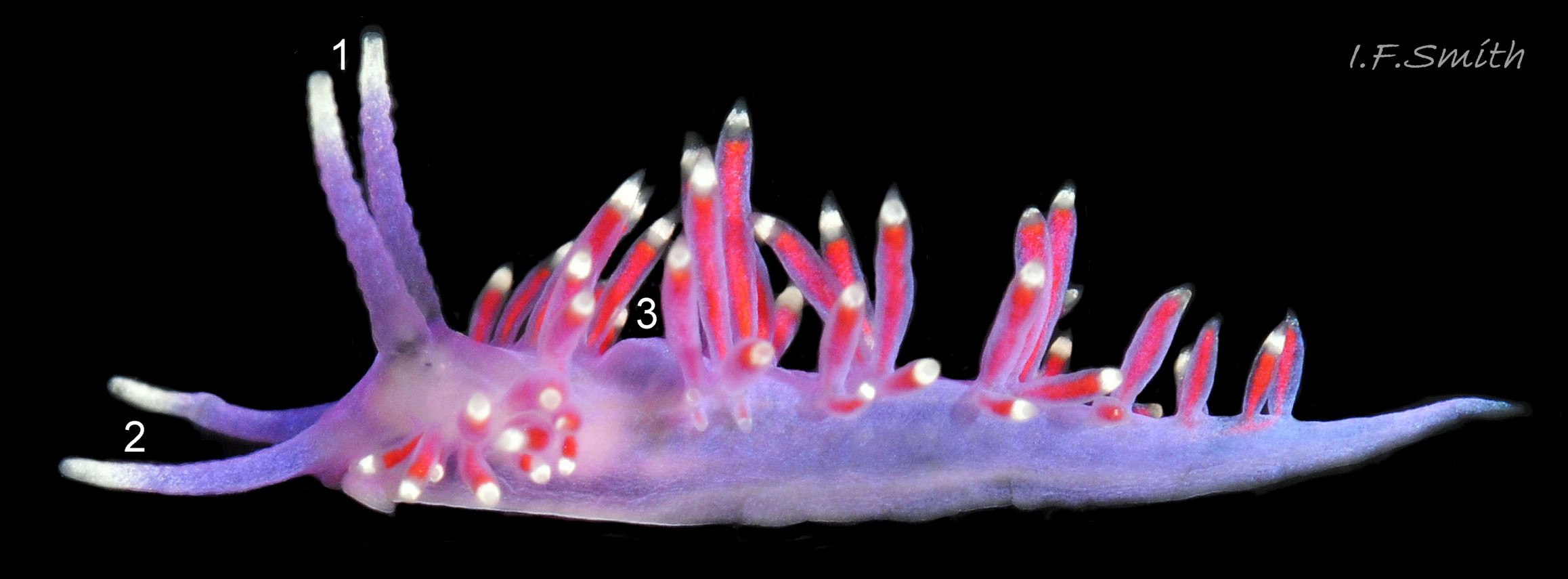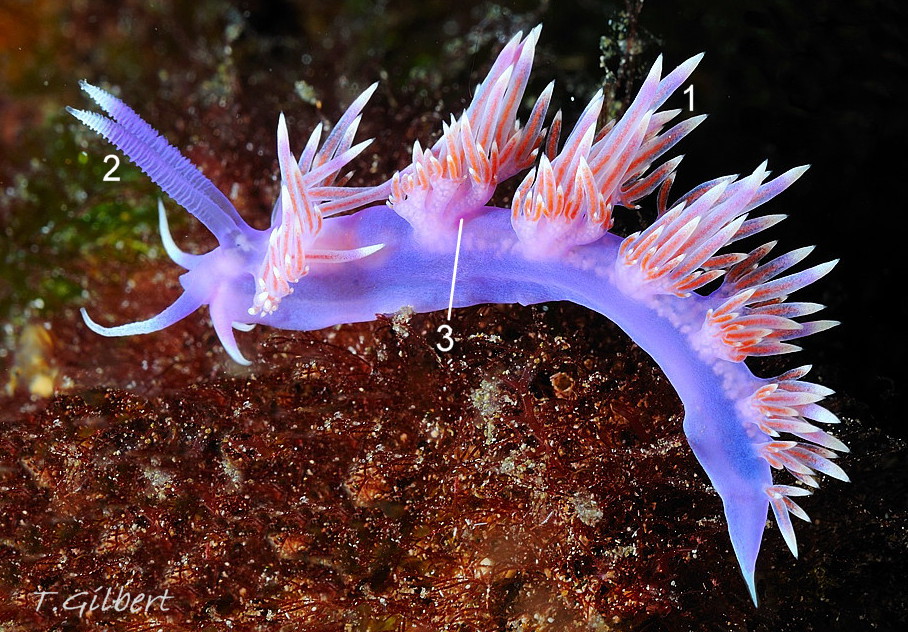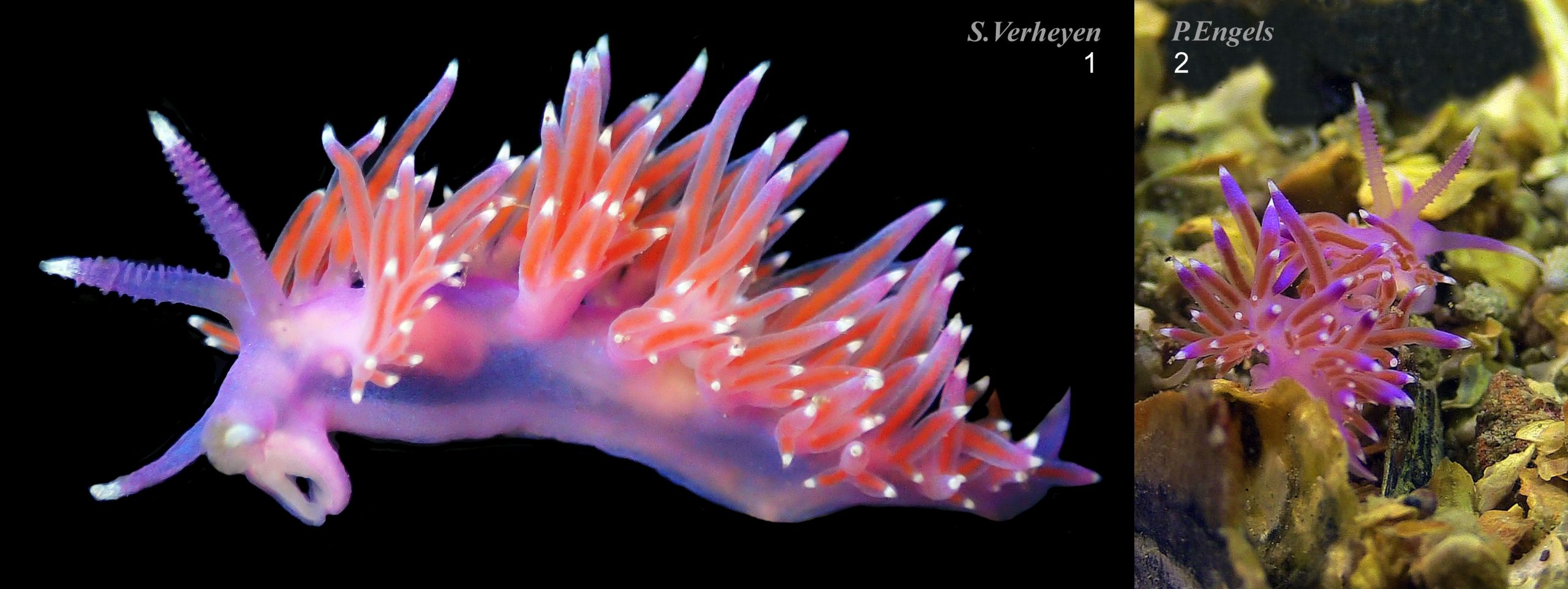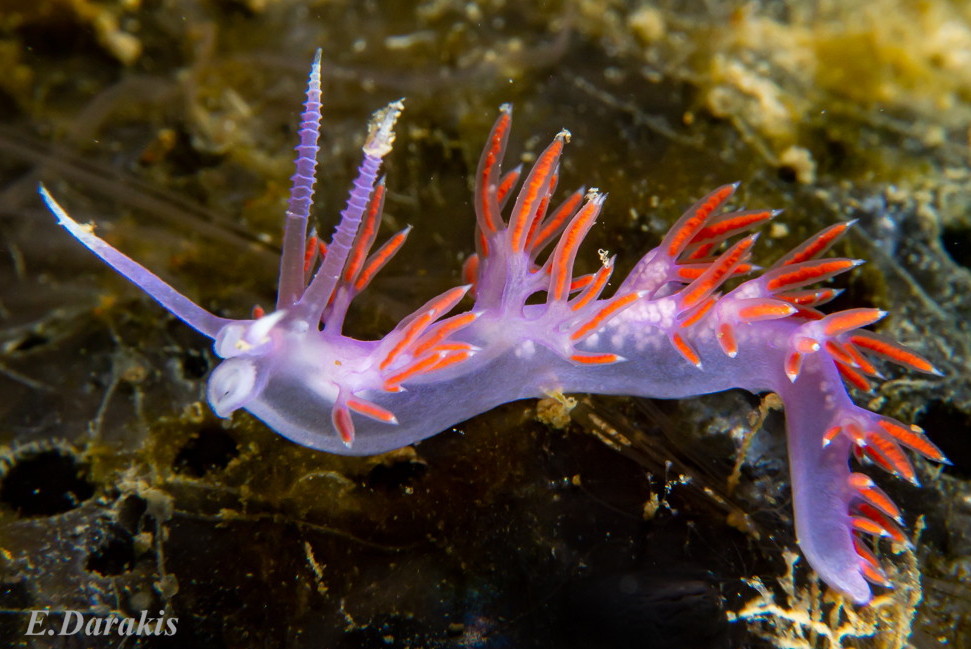Click image to enlarge with full caption. Main text below slider.
Edmundsella pedata (Montagu, 1816)
Current taxonomy: World Register of Marine Species www.marinespecies.org/aphia.php?p=taxdetails&id=1047602
Synonyms: Eolis landsburgii Alder & Hancock, 1846;
Flabellina pedata (Montagu, 1816); Coryphella pedata (Montagu, 1816).
GLOSSARY BELOW
Description
The fully extended slender body of E. pedata is about ten times as long as it is wide; it grows up to 48 mm long. The integument of the body and appendages is translucent red-purple 01 Edmundsella pedata , blue-purple 02 Edmundsella pedata or so pale as to be almost colourless 03 Edmundsella pedata . Immature specimens around 8 mm long are more translucent than adults, so white internal organs, tinted by the overlying integument, can be discerned 04 Flabellina pedata and it can be seen that the posterior half contains no ovotestes 05 Edmundsella pedata , which develop at maturity. Black internal eyes, resting on the circum-oesophageal nerve ring behind the rhinophores, are best discerned on young specimens 05 Edmundsella pedata & 08 Edmundsella pedata . Sexually mature specimens have less translucent bodies which may conceal the ovotestes 06 Flabellina pedata but their pale spheroids and other organs may be visible in young adults about 16 mm long 01 Edmundsella pedata & 07 Edmundsella pedata . Sometimes there is a hump over the pericardium 10 Edmundsella pedata .There are no opaque pigment markings on the surface of the main body.
The cerata are arranged along each side in nine or more distinct groups on adults 06 Flabellina pedata . Relative to most other NW European Flabellinidae, each group has few cerata. On young specimens the cerata are quite short and leave much of the body exposed 02 Edmundsella pedata ; they are often longer and conceal more of the body on adults 06 Flabellina pedata . Each group arises from a raised mound of the notal ridge 08 Edmundsella pedata . As on the rest of the body, apart from the apex, the cerata have a translucent purple integument. The usually bright red digestive gland shows clearly through it. The apex is transparent and colourless revealing the internal, translucent white cnidosac except where the subapical ring of opaque white surface pigment conceals it 09 Edmundsella pedata .
The wrinkled rhinophores and smooth oral tentacles are of equal length and translucent purple, like the rest of the body, with a cap of opaque white covering the distal quarter 10 Edmundsella pedata .
Ventrally, the visible part of the head consists of large outer lips which form, when protruded, a short cylinder notched ventrally 11 Edmundsells pedata .
The slender foot is widest at the anterior and tapers steadily to the pointed posterior. Distinct, wedge shaped propodial tentacles are as long as the width of the foot 11 Edmundsells pedata . The sole is translucent white medially and tinted purplish at the periphery by the purple of the dorsal surface showing through.
Key identification features
Until recently E. pedata 08 Edmundsella pedata could not be mistaken for any other aeolid in north-west Europe as it was the only species with the whole body tinted purple, but the situation is changing as the Mediterranean and south Iberian species Flabellina affinis was found in Bretagne in 2020.
Edmundsella pedata
1) Whole integument tinted purple.
2) Rhinophores wrinkled, not lamellate.
3) Cerata arise from low mounds on the notal ridge.
4) Lives in north-west Europe and the Mediterranean.
Similar species
Flabellina affinis (Gmelin, 1791)
12 Edmundsella pedata& 13 Edmunsella pedata
1) Whole integument tinted purple (varies in intensity); on cerata it is often most intense subapically.
2) Rhinophores distinctly lamellate.
3) Cerata arise from distinct peduncle.
4) Mediterranean, Islas Canarias, south Iberia, and found in Bretagne in 2020 13 Edmunsella pedata .
Paraflabellina ischitana (Hirano & T. E. Thompson, 1990)
14 Edmunsella pedata
1) Purple integument on body, but no purple on cerata.
2) Rhinophores distinctly lamellate.
3) Cerata arise from distinct peduncle.
4) Mediterranean and Iberia as far north as Galicia www.inaturalist.org/observations/73483250 .
Habits and ecology
E. pedata lives at LWS on rocky shores and sublittorally, on or near its Eudendrium hydroid prey. Early juveniles may feed on other hydroid species. Like other nudibranchs it is a simultaneous hermaphrodite. It deposits a thin white spiral of spawn among Eudendrium from May to September. After about 12 days in British waters, 6 in the warmer Mediterranean, veliger larvae hatch and drift as plankton for about two weeks before settling on the sea floor and transforming into the adult form (Thomson & Brown, 1984).
Distribution and status
It is widespread from northern Norway to Islas Canarias and the east coast of the Mediterranean, but absent or scarce in the inner Baltic and continental coast of the southern North Sea, GBIF map www.gbif.org/species/9596708 . It is not usually numerous but, because its colour makes it easy to discern and identify, there are many records all round Ireland and Britain on hard substrate sea beds and occasionally on rocky shores where a strong current favours the food organisms, UK Map NBN species.nbnatlas.org/species/NHMSYS0021185580
Acknowledgements
For use of images I gratefully thank Emmanouil Darakis, Paul Engels, Tony Gilbert, João Pedro Silva and Stefan Verheyen. I thank Debbie Evans for a specimen to photograph.
References and links
Alder, J. & Hancock, A. 1845-1855. A monograph of the British nudibranchiate mollusca. London, Ray Society. Fam.3 Pl. 20 [As Eolis landsburgii]
www.biodiversitylibrary.org/item/131598#page/362/mode/1up
Thompson, T.E. & Brown, G.H. 1984. Biology of opisthobranch molluscs 2. London, Ray Society.
Glossary
buccal mass = anterior of digestive system including an odontophore which supports the anterior of the radula, and a complex of muscles to operate them and other mouthparts.
cerata = (sing. ceras) lobes on dorsum of aeolids and some other seaslugs.
circum-oesophageal nerve ring = ganglia-bearing nerve cord (the ‘brain’) which encircles the oesophagus in gastropods.
cnidocytes = explosive stinging cells of Cnidaria. en.wikipedia.org/wiki/Cnidocyte
cnidosac = storage capsule at tips of cerata of Aeolidiidae for ingested unexploded cnidocytes.
digestive gland = large organ in gastropods which acts like the liver and pancreas in mammals to absorb food.
distal = away from centre of body or from point of attachment.
ganglia = (sing. ganglion) knots containing sensory cell bodies on a nerve cord, which conducts impulses to innervate organs of the body.
lamellae = small plates on rhinophores.
lamellate = bearing lamellae.
LWS = low water spring tide; two periods of a few days each month when tide falls lowest.
notal = (adj.) of the back.
notal ridge = ridge on dorsal surface.
notum = (of seaslugs) the dorsal surface.
ovotestis = (pl. ovotestes) hermaphrodite organ serving as both ovary and testis.
peduncle = thick stalk-like feature supporting the cerata like candles in a candelabra.
propodial tentacles = tentacular, lateral extensions on anterior of the foot.
propodium = anterior portion of gastropod foot. (adj. propodial).
rhinophores = chemo-receptor tentacles on top of head of nudibranch.
veliger = shelled larva of marine gastropod or bivalve mollusc which moves by action of cilia on a velum (bilobed flap). Stage may be passed in plankton or within liquid-filled egg-capsule.
